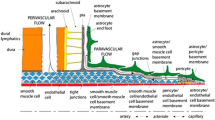Abstract
A detailed theoretical model of capillary transport in rectangular microchannels is proposed. Two important aspects of capillary transport are revisited, which are considered with simplified assumption in the literature. The capillary flow is assumed as a low Reynolds number flow and hence creeping flow assumptions are considered for majority of analyses. The velocity profile used with this assumption results into a steady state fully developed velocity profile. The capillary flow is inherently a transient process. In this study, the capillary flow analysis is performed with transient velocity profile. The pressure field expression at the entrance of the microchannel is another aspect which is not often accurately represented in the literature. The approximated pressure field expression at the entrance of the rectangular microchannel is widely used in the literature. An appropriate entrance pressure field expression for a rectangular microchannel is proposed. For both analyses, the governing equation of the capillary transport in rectangular microchannel is derived by applying the momentum equation to the fluid control volume along the microchannel. The non-dimensional governing equations are obtained, each for a transient velocity profile and a newly proposed pressure field, for analyzing the importance of such velocity profile and pressure field expression.






Similar content being viewed by others
References
Bhattacharya S, Gurung D (2010) Derivation of governing equation describing time-dependent penetration length in channel flows driven by non-mechanical forces. Anal Chim Acta 666:51–54
Chakraborty S (2007) Electroosmotically driven capillary transport of typical non-newtonian biofluid in rectangular microchannels. Anal Chim Acta 605:175–184
Dimitrov D, Milchev A, Binder K (2007) Capillary rise in nanopores: Molecular dynamics evidence for the lucas-washburn equation. Phys Rev Lett 99:054501
Diotallevi F, Biferale L, Chibbaro S, Pontrelli G, Toschi F, Succi S (2009) Lattice boltzmann simulations of capillary filling: finite vapour density effects. Eur Phys J 171(1):237–243
Dreyer M, Delgado A, Rath H (1993) Fluid motion in capillary vanes under reduced gravity. Microgravity Sci Technol 4:203
Dreyer M, Delgado A, Rath HJ (1994) Capillary rise of liquid between parallel plates under microgravity. J Colloid Interface Sci 163:158
Eijkel JCT, van den Berg A (2006) Young 4ever—the use of capillarity for passive flow handling in lab on a chip devices. Lab Chip 6(11):1405–1408
Juncker D, Schmid H, Drechsler U, Wolf H, Wolf M, Michel B, Rooij ND, Delamarche E (2002) Autonomous microfluidic capillary system. Anal Chem 74:6139–6144
Keh H, Tseng H (2001) Transient electrokinetic flow in fine capillaries. J Colloid Interface Sci 242:450
Levin S, Reed P, Watson J (1976) A theory of the rate of rise a liquid in a capillary. In: Kerker M (ed) Colloid and interface science, vol 3. Academic Press, New York
Levin S, Lowndes J, Watson E, Neale G (1980) A theory of capillary rise of a liquid in a vertical cylindrical tube and in a parallel-plate channel. J Colloid Interface Sci 73:136
Marwadi A, Xiao Y, Pitchumani R (2008) Theoretical analysis of capillary-driven nanoparticulate slurry flow during a micromold filling process. Int J Multiph Flow 34:227
Narayan A, Karniadakis G, Beskok A (2005) Microflows and nanoflows fundamental and simulation. Springer, New York
Newman S (1968) Kinetics of wetting of surfaces by polymers; capillary flow. J Colloid Interface Sci 26:209
Nguyen N, Werely S (2003) Fundamentals and applications of microfluidics. Artech House, New York
Phan VN, Yang C, Nguyen NT (2009) Analysis of capillary filling in nanochannels with electroviscous effects. Microfluid Nanofluid 7:519–530
Phan VN, Nguyen NT, Yang C, Joseph P, Djeghlaf L, Bourrier D, Gue AM (2010) Capillary filling in closed end nanochannels. Langmuir 26:13251–13255
Radiom M, Chan WK, Yang C (2010) Capillary filling with the effect of pneumatic pressure of trapped air. Microfluid Nanofluid 9:65–75
Saha A, Mitra S (2009a) Effect of dynamic contact angle in a volume of fluid (VOF) model for a microfluidic capillary flow. J Colloid Interface Sci 339(2):461–480
Saha A, Mitra S (2009b) Numerical study of capillary flow in microchannels with alternate hydrophilic–hydrophobic bottom wall. J Fluid Eng 131:061202
Saha A, Mitra S, Tweedie M, Roy S, McLaughlin J (2009) Experimental and numerical investigation of capillary flow in SU8 and PDMS microchannels with integrated pillars. Microfluid Nanofluid 7:451–465
Schlichting DH (1968) Boundary layer theory. Mc-Graw Hill Book Company, London (translated by Dr. Kestin)
Szekely J, Neumann W, Chuang Y (1971) The rate of capillary penetration and the applicability of the washburn equation. J Colloid Interface Sci 35(2):273
Waghmare PR, Mitra SK (2010a) Finite reservoir effect on capillary flow of microbead suspension in rectangular microchannels. J Colloid Interface Sci 351(2):561–569
Waghmare PR, Mitra SK (2010b) Modeling of combined electroosmotic and capillary flow in microchannels. Anal Chim Acta 663:117–126
Waghmare PR, Mitra SK (2010c) On the derivation of pressure field distribution at the entrance of a rectangular capillary. J Fluid Eng 132:054502
Walker GM, Beebe DJ (2002) A passive pumping method for microfluidic devices. Lab Chip 2(3):131–134
Washburn E (1921) The dynamics of capillary flow. Phys Rev 17(3):273
White FM (2006) Viscous fluid flow. McGrawhill, New York
Xiao Y, Yang F, Pitchumani R (2006) A generalized flow analysis of capillary flows in channels. J Colloid Interface Sci 298:880–888
Zhang J (2011) Lattice boltzmann method for microfluidics: models and applications. Microfluid Nanofluid 10:1–28
Zimmermann M, Schmid H, Hunziker P, Delamarche E (2007) Capillary pumps for autonomous capillary systems. Lab Chip 7(1):119–125
Acknowledgements
The authors gratefully acknowledge the funding provided by Alberta Ingenuity, now part of Alberta Innovates-Technology Futures from the Province of Alberta in the form of the scholarship provided to P.R.W.
Author information
Authors and Affiliations
Corresponding author
Rights and permissions
About this article
Cite this article
Waghmare, P.R., Mitra, S.K. A comprehensive theoretical model of capillary transport in rectangular microchannels. Microfluid Nanofluid 12, 53–63 (2012). https://doi.org/10.1007/s10404-011-0848-8
Received:
Accepted:
Published:
Issue Date:
DOI: https://doi.org/10.1007/s10404-011-0848-8




